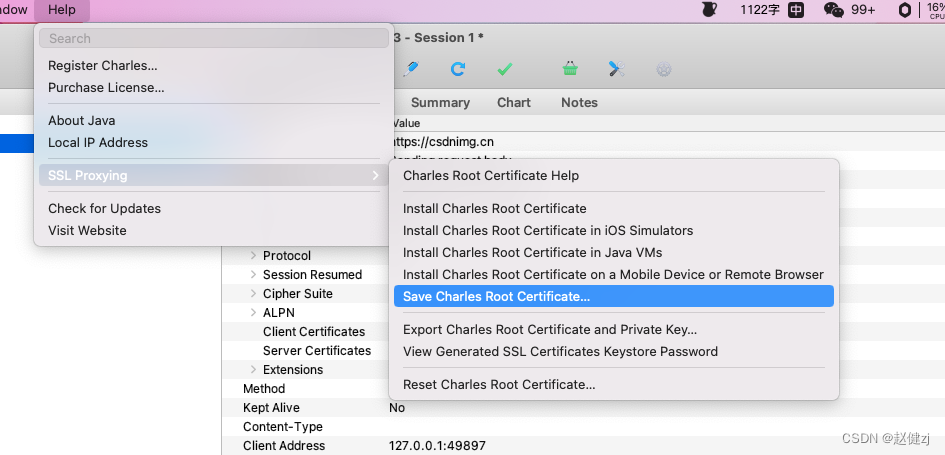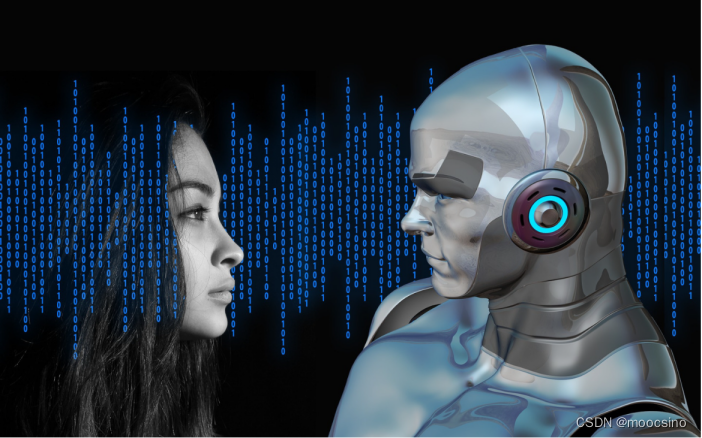兔子pcd文件下载:firc.lanzoux.com/iLfSgg749ab
# -*- coding: utf-8 -*-
# Point cloud library
import pcl
import pcl.pcl_visualization
# Opencv
# import opencv
import cv2
def main():
# These are track bar initial settings adjusted to the given pointcloud to make it completely visible.
# Need to be adjusted depending on the pointcloud and its xyz limits if used with new pointclouds.
# int a = 22;
# int b = 12;
# int c= 10;
a = 22
b = 12
c = 10
# PCL Visualizer to view the pointcloud
# pcl::visualization::PCLVisualizer viewer ("Simple visualizing window");
viewer = pcl.pcl_visualization.PCLVisualizering()
# int main (int argc, char** argv)
# {
# pcl::PointCloud<pcl::PointXYZRGBA>::Ptr cloud (new pcl::PointCloud<pcl::PointXYZRGBA>);
# pcl::PointCloud<pcl::PointXYZRGBA>::Ptr cloud_filtered (new pcl::PointCloud<pcl::PointXYZRGBA>);
# if (pcl::io::loadPLYFile<pcl::PointXYZRGBA> (argv[1], *cloud) == -1) //* load the ply file from command line
# {
# PCL_ERROR ("Couldn't load the file\n");
# return (-1);
# }
cloud = pcl.load("rabbit.pcd")
#cloud = pcl.load("Tile_173078_LD_010_017_L22.obj")
# pcl::copyPointCloud( *cloud,*cloud_filtered);
# cloud_filtered = cloud.copyPointCloud()
cloud_filtered = cloud
# float i
# float j
# float k
# cv::namedWindow("picture");
# // Creating trackbars uisng opencv to control the pcl filter limits
# cvCreateTrackbar("X_limit", "picture", &a, 30, NULL);
# cvCreateTrackbar("Y_limit", "picture", &b, 30, NULL);
# cvCreateTrackbar("Z_limit", "picture", &c, 30, NULL);
# cv2.CreateTrackbar("X_limit", "picture", a, 30)
# cv2.CreateTrackbar("Y_limit", "picture", b, 30)
# cv2.CreateTrackbar("Z_limit", "picture", c, 30)
# // Starting the while loop where we continually filter with limits using trackbars and display pointcloud
# char last_c = 0;
last_c = 0
# while(true && (last_c != 27))
while last_c != 27:
# pcl::copyPointCloud(*cloud_filtered, *cloud);
# // i,j,k Need to be adjusted depending on the pointcloud and its xyz limits if used with new pointclouds.
i = 0.1 * a
j = 0.1 * b
k = 0.1 * c
# Printing to ensure that the passthrough filter values are changing if we move trackbars.
# cout << "i = " << i << " j = " << j << " k = " << k << endl;
print("i = " + str(i) + " j = " + str(j) + " k = " + str(k))
# Applying passthrough filters with XYZ limits
# pcl::PassThrough<pcl::PointXYZRGBA> pass;
# pass.setInputCloud (cloud);
# pass.setFilterFieldName ("y");
# // pass.setFilterLimits (-0.1, 0.1);
# pass.setFilterLimits (-k, k);
# pass.filter (*cloud);
pass_th = cloud.make_passthrough_filter()
pass_th.set_filter_field_name("y")
pass_th.set_filter_limits(-k, k)
cloud = pass_th.filter()
# pass.setInputCloud (cloud);
# pass.setFilterFieldName ("x");
# // pass.setFilterLimits (-0.1, 0.1);
# pass.setFilterLimits (-j, j);
# pass.filter (*cloud);
# pass_th.setInputCloud(cloud)
pass_th.set_filter_field_name("x")
pass_th.set_filter_limits(-j, j)
cloud = pass_th.filter()
# pass.setInputCloud (cloud);
# pass.setFilterFieldName ("z");
# // pass.setFilterLimits (-10, 10);
# pass.setFilterLimits (-i, i);
# pass.filter (*cloud);
# pass_th.setInputCloud(cloud)
pass_th.set_filter_field_name("z")
pass_th.set_filter_limits(-10, 10)
cloud = pass_th.filter()
# // Visualizing pointcloud
# viewer.addPointCloud (cloud, "scene_cloud");
# viewer.spinOnce();
# viewer.removePointCloud("scene_cloud");
viewer.AddPointCloud(cloud, b'scene_cloud', 0)
viewer.SpinOnce()
# viewer.Spin()
viewer.RemovePointCloud(b'scene_cloud', 0)
if __name__ == "__main__":
# import cProfile
# cProfile.run('main()', sort='time')
main()
输出:
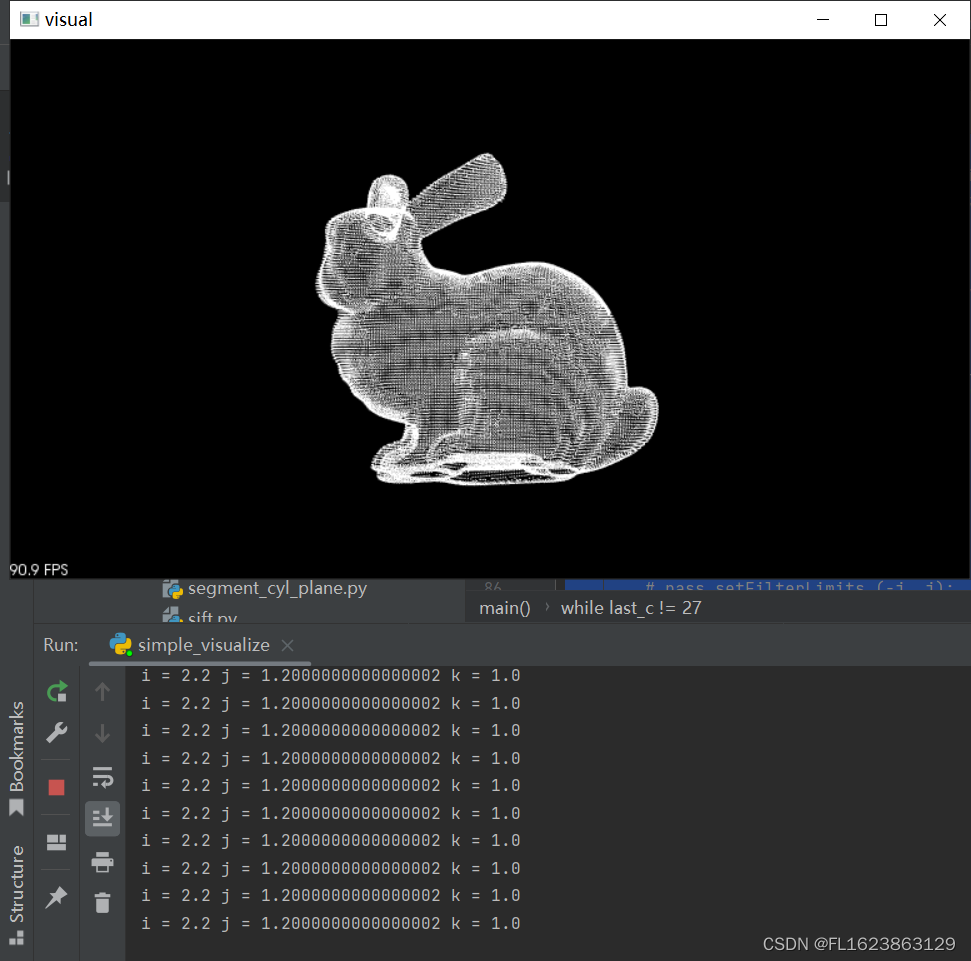


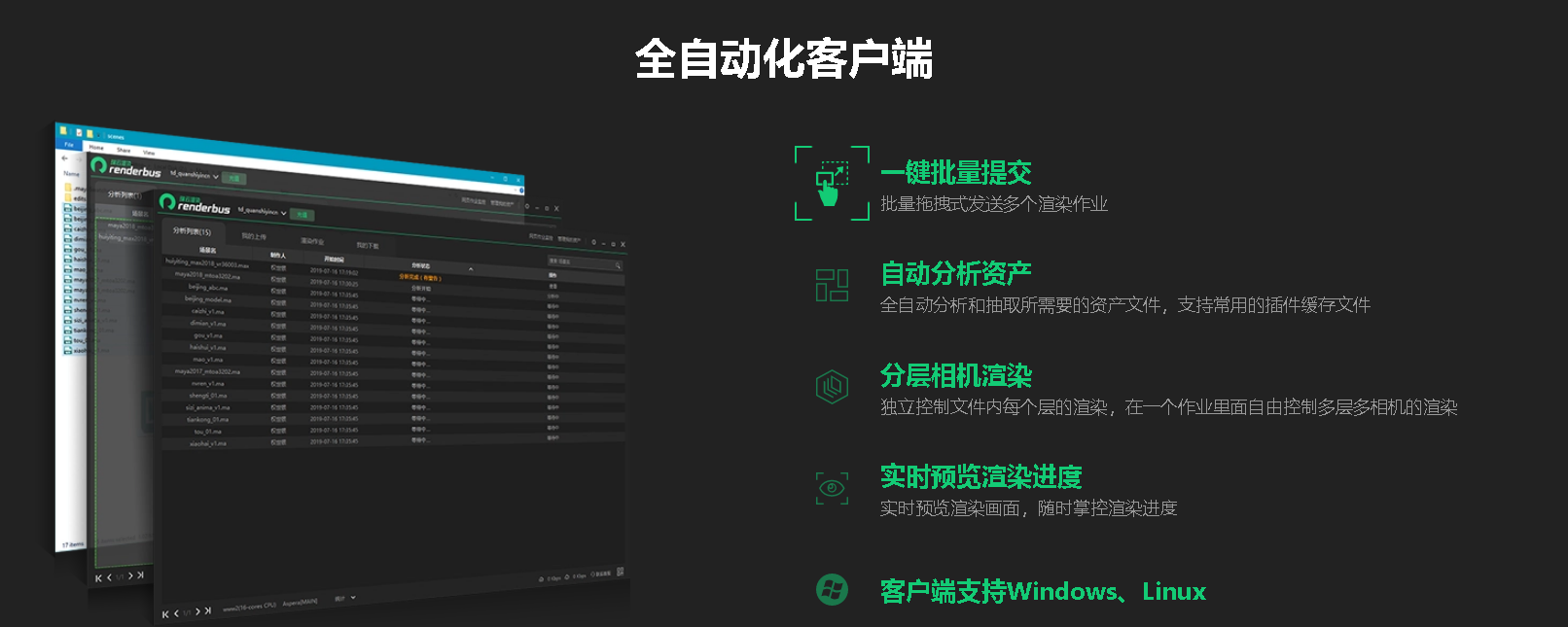




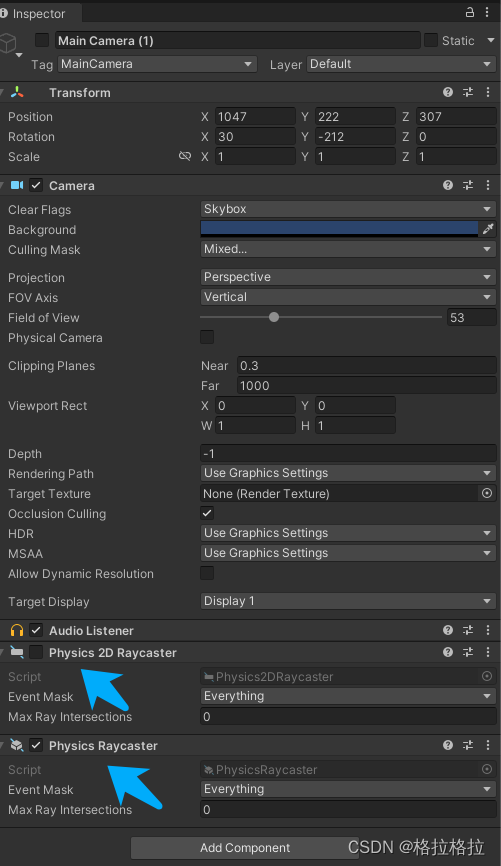



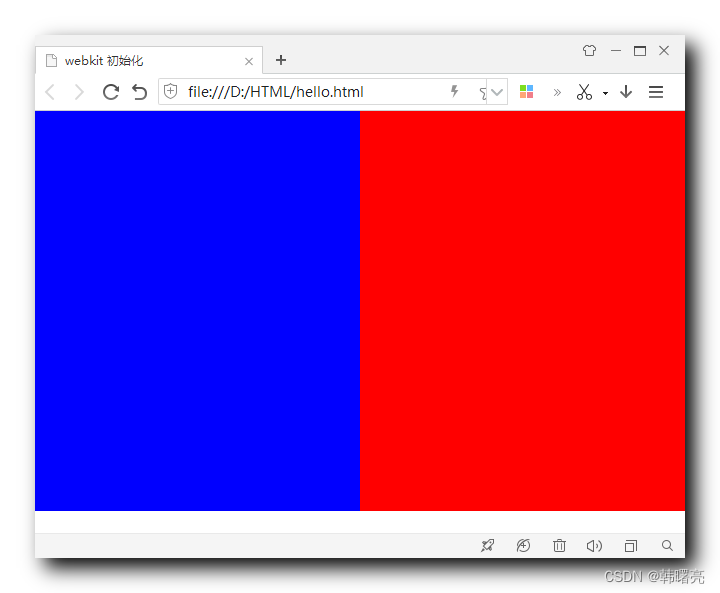

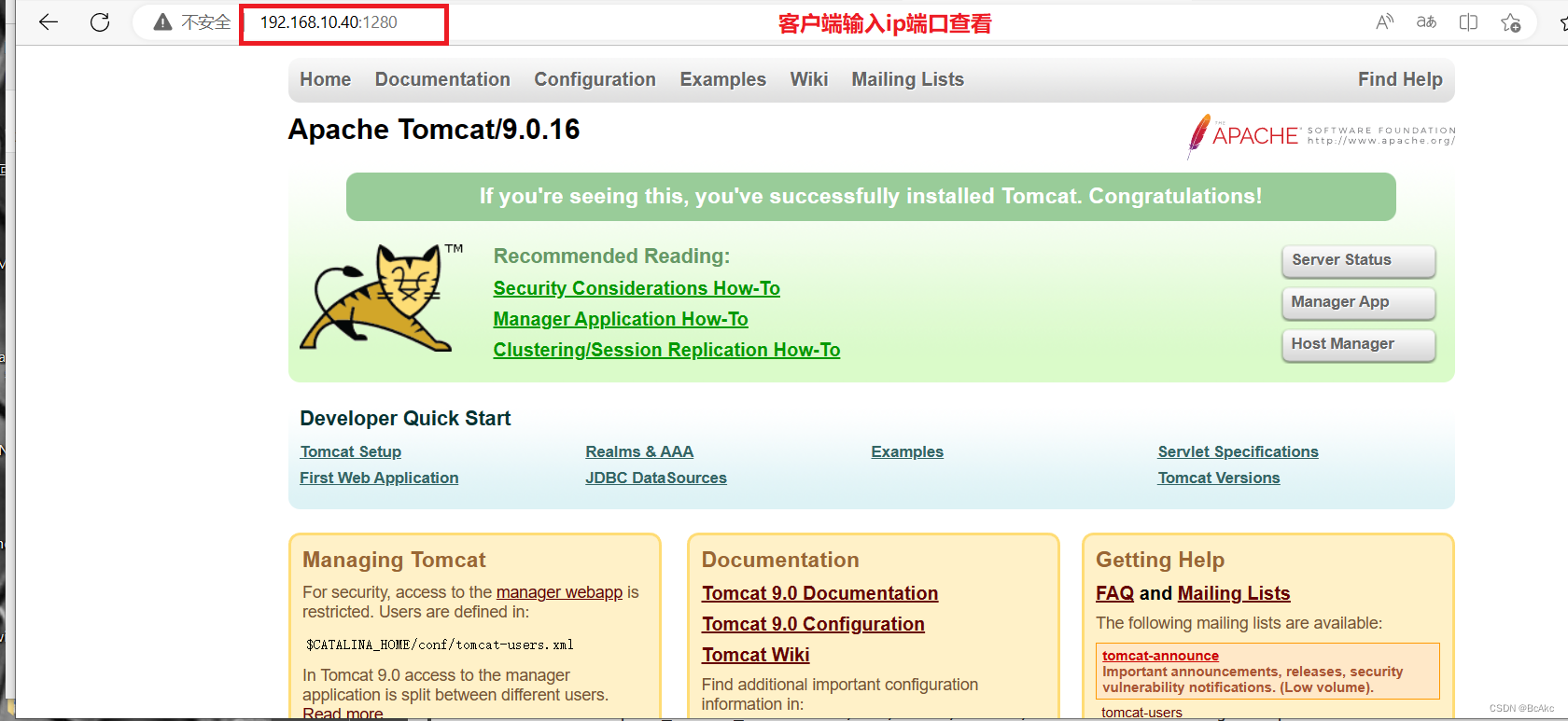

![[比赛简介]AMP®-Parkinson‘s Disease Progression Prediction](https://img-blog.csdnimg.cn/48fe5ea8a2a943e6ab3af2aeb50f9b7a.png)
